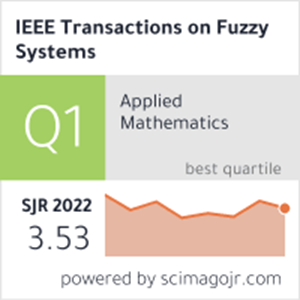演化高斯系统作为联邦回归问题的框架
IF 11.9
1区 计算机科学
Q1 COMPUTER SCIENCE, ARTIFICIAL INTELLIGENCE
引用次数: 0
摘要
在本文中,我们提出了一种新的用于多元回归问题的联邦学习框架,称为进化高斯联邦回归(egaus +$_{\text{FR}}$)。对联邦方法的需求是由于分布式获取数据和保护分发这些数据的权利的问题日益严重。回归问题通常是非线性的,因此,与聚类紧密相关,将数据空间划分为更小的子空间,在这些子空间中可以应用线性近似。在这里,我们面临着传统聚类方法的主要缺点,即需要预定义数量的聚类。在联邦学习问题中,数据通常不相同地分布在不同的源或客户机之间,这是一个重大挑战。这个问题可以通过引入一种不断发展的方法来克服,这种方法可以动态地添加和删除集群。我们的方法是使用增量c回归或c变量聚类方法来定义靠近直线的聚类,并用中心和协方差矩阵来描述它们。集群是为每个数据源或客户机完成的。由于数据共享的限制和保护,只将所有客户端的中心和协方差矩阵传输到主服务器并合并在一起,这里采用egaus +方法。从合并的聚类中生成辅助点,然后利用经典模糊模型对函数进行近似。我们提出的方法在简单的合成数据上进行了验证,而合成数据集和真实数据集用于测试时间复杂性和随客户端数量的可扩展性。结果证明了演化联邦方法的优点,它可以获得高质量的函数逼近,并且可以很容易地扩展到高维问题。本文章由计算机程序翻译,如有差异,请以英文原文为准。
Evolving Gaussian Systems as a Framework for Federated Regression Problems
In this article, we present a novel federated learning framework to multivariate regression problems, termed evolving Gaussian federated regression (eGauss+$_{\text{FR}}$
求助全文
通过发布文献求助,成功后即可免费获取论文全文。
去求助
来源期刊

IEEE Transactions on Fuzzy Systems
工程技术-工程:电子与电气
CiteScore
20.50
自引率
13.40%
发文量
517
审稿时长
3.0 months
期刊介绍:
The IEEE Transactions on Fuzzy Systems is a scholarly journal that focuses on the theory, design, and application of fuzzy systems. It aims to publish high-quality technical papers that contribute significant technical knowledge and exploratory developments in the field of fuzzy systems. The journal particularly emphasizes engineering systems and scientific applications. In addition to research articles, the Transactions also includes a letters section featuring current information, comments, and rebuttals related to published papers.
 求助内容:
求助内容: 应助结果提醒方式:
应助结果提醒方式:


